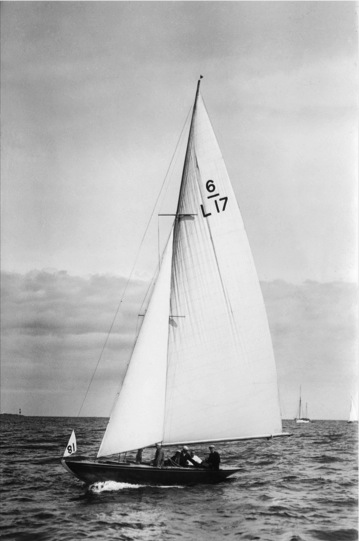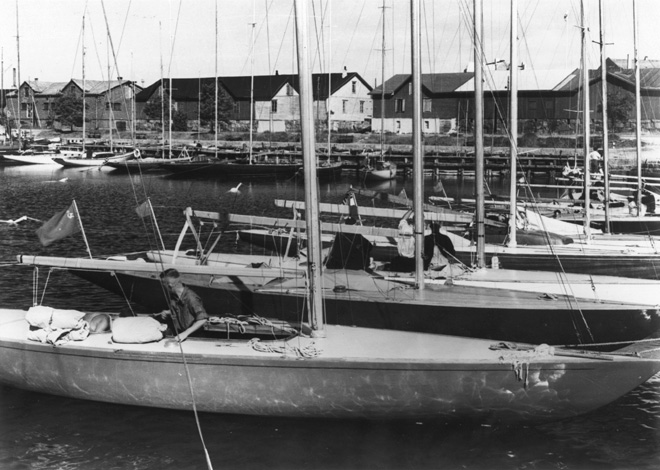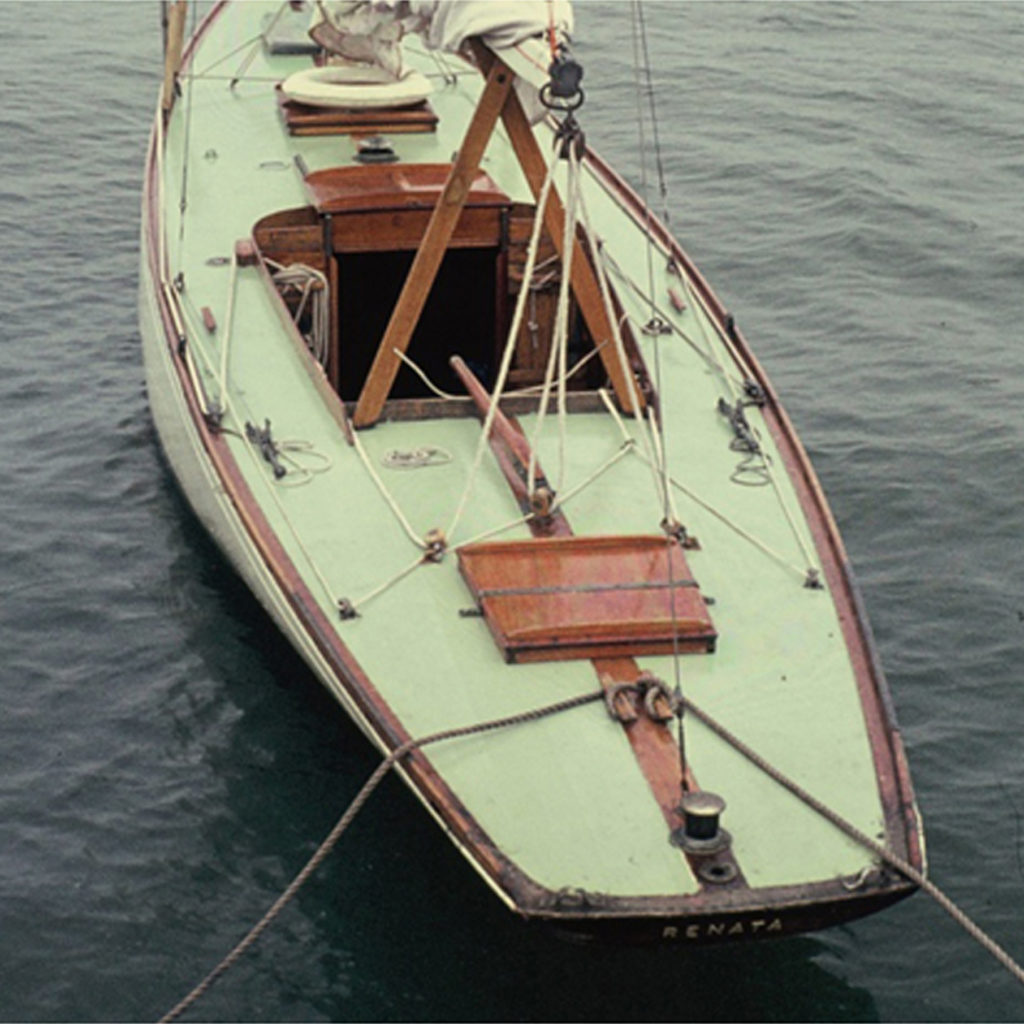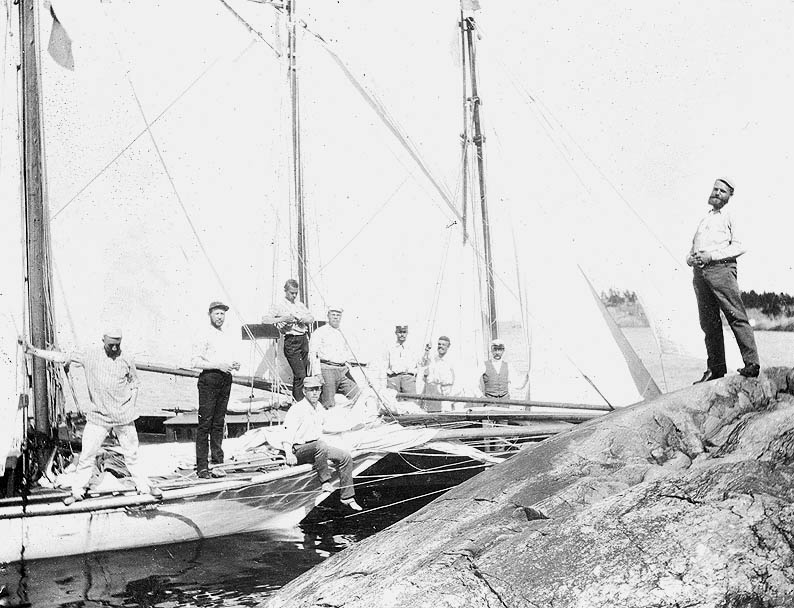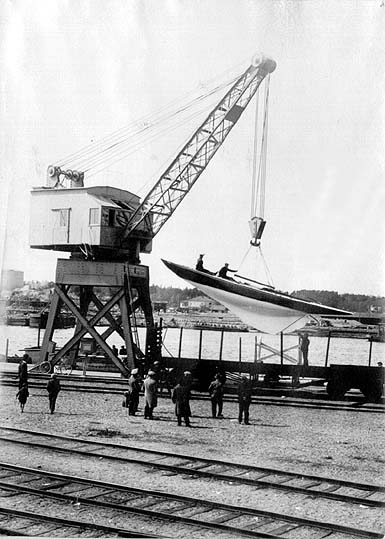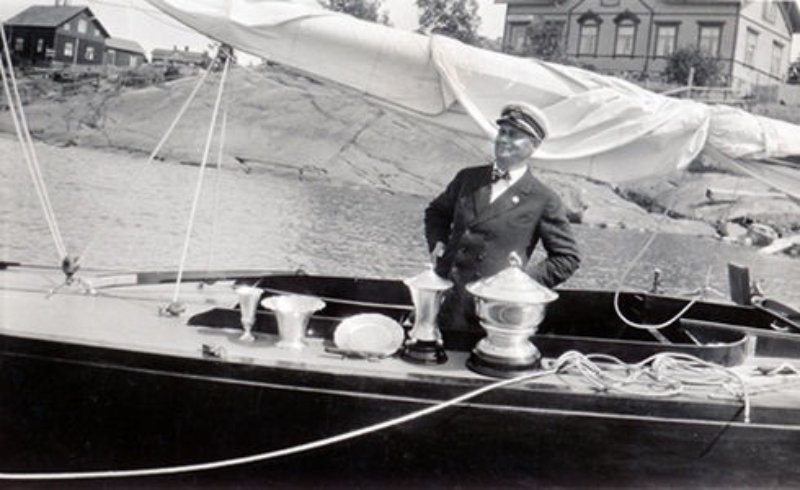
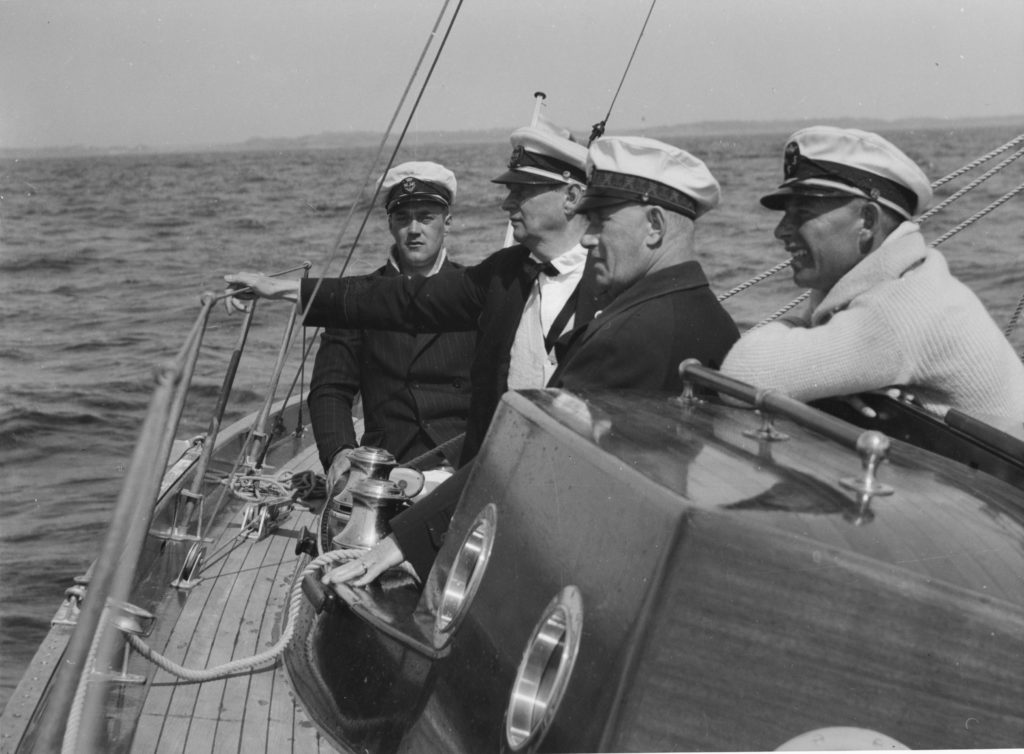
Henrik Ramsay (1886–1951) was a major influence on the economy and a statesman but above all a passionate sailor.
Ramsay kirjoittaa teoksessaan ”Purjehtijan muistelmia”: Piintyneimmät purjehtijat tulevat niistä, jotka alkavat kelvottomilla veneillä ja kotitekoisilla purjeilla. Jos näen Kruunuvuorenselällä tai Särkänsalmessa jonkin ihmeellisen vesivehkeen sukeltautuvan esiin säkki tai kotona kokoonkursittuja kankaita mastossa, niin mieleni ilahtuu ja luotan jälleen siihen, että vanhat jumalat vielä elävät. — Jos on itse joutunut puuhaamaan ja hommaamaan saadakseen takilan ja purjeen ja veneen, niin on tulos paljon ihmeellisempi ja täydellisempi kuin jos alus olisi tullut veistämöltä valmiiksi takiloituna ja varustettuna.
Ramsay tilasi ensimmäisen oman kuutosensa Svalanin vuonna 1924. Sen piirtäjä Gunnar Stenbäck muistetaan myös Hai-veneen luojana. Kuutosluokka eli voimakkaan kasvun aikaa. Uusia ideoita kokeiltiin. Jo 2 vuotta myöhemmin Ramsay tilasi uuden veneen. Tällä kertaa Axel Gustaf Estlanderilta.
Ramsayn legendaarinen Estlander-kuutonen Renata pantiin alulle syksyllä 1926. Rakentaja Arthur Magnus Pettersson tunnettiin siitä, että hän kunnioitti kyllä piirustuksen päälinjoja, mutta esimerkiksi kannen kaarevuudessa suunnittelijat luottivat hänen tietotaitoonsa.
Kesän 1927 jälkeen Ramsay jäi mietteliääksi. Luoviessaan Renatassa ei vastannut odotuksia, ja Estlander oli jo valmis vaihtamaan sen toiseen kuutoseen, mutta Ramsay ei suostunut. Pysyin vakuuttuneena siitä, että lisäkokemus ja oikea viimeistely auttaisivat minunkin kuutoseni esittämään kaiken kykynsä, ja syksyn pimeinä tunteina yritin eritellä kesän kokemuksia sekä Renatan oikullisia ominaisuuksia. Eräänä aamuna heräsin ongelma ratkaistuna. ’Mastoa on siirrettävä taaksepäin’, sanoi sisäinen ääneni, ja me siirsimme maston takiloineen kokonaisen jalan [30 cm] perään päin. Ne olivat jyrkkiä otteita. Estlander enemmän kuin epäili ja neuvoi luopumaan yrityksestä, mutta minä uskoin vastaukseen, jonka ajattelu ja vaisto olivat minulle antaneet.
Seuraava kesä toi Renatalle useita palkintoja, joista kirkkain oli ”voitokkaimman kuutosen” pokaali Sandhamnin regatassa 1928. Kilpailuun osallistui 30 kuutosta, mukana ajankohdan parhaat yksilöt aina Amerikkaa myöten.
Näin Ramsay pohti kilpapurjehduksen tulevaisuutta muistelmiensa viimeisellä sivulla:Uudet ajat tuovat uudet tyypit. Aerodynamiikan edistysaskelet pakottavat ehkä valkoiset, pullistuvat purjeet häviämään, ja tuulen voiman kokoavat kokonaan toisenlaiset siivet. Veneen rungot puristetaan valmiiksi muoteissa, eikä purjehtija enää tunne rungon elävän aaltojen painaessa taipuvia laitoja. Ruorimies ei jännittyneenä pimeässä ja sumussa etsi maata näkyviinsä, sillä tutkalevy osoittaa joka hetki tarkan sijainnin. Kojeitten antama varmuus ottaa vallan, ja paljon siitä laskemattomasta, joka juuri tarjoaa purjehdukselle sen viehätyksen, häviää. Purjehtimisen ihmeellinen mystiikka häipyy.
Nyt yli 90-vuotias Renata on taas uuden elämän kynnyksellä, sillä sen pelastamiseksi perustettu yhdistys Club Renata kerää varoja veneen entisöimiseksi tammisaarelaisella telakalla hankolaisen veistäjä Peter Granströmin johdolla.
Text: Sampsa Laurinen. Photos: Hanko museum.
Lähteet: Henrik Ramsay: Purjehtijan muistelmat, suom. Martti Jukola ja J. W. Rangell, WSOY 1947. Alftan, Liewendahl, Barck: Sexornas Jakt, Finlands 6 mR -förbund d.f. 1992. Erkki Maasalo: Sir Henrik saa tehtävän, Fenix-kustannus Oy, 2004

This story has been produced with the support of the Svenska Kulturfonden.

